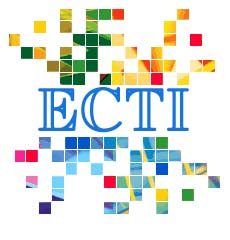Sensor Array Optimization for Complexity Reduction in Electronic Nose System
Main Article Content
Abstract
An Electronic nose (E-Nose) can be used to assess food quality and fruit ripeness without personal bias. A set of relevant sensors must be identified to design an effective E-Nose and reduce implementation cost and complexity. The analysis of tropical fruit odour in terms of pattern recognition errors is carried out to determine the minimum number of sensors and their combinations. Two new methods namely 1) principal component loading and mutual information between sensor data, and 2) threshold based approach are proposed in this work to evaluate and optimize the sensor set. Four pattern recognition methods, namely multilayer perceptron neural network (MLPNN), radial basis function neural network (RBFNN), support vector machine (SVM), and k-nearest neighbour (k-NN) are also compared in terms of classification performance. The pattern recognition error of SVM with the optimal set of sensors is as low as 2.78% and that of k-NN is 9.72%. The results conclude that the pattern classification error with MLPNN, and RBFNN is higher than the error from k-NN and SVM.
Article Details
This journal provides immediate open access to its content on the principle that making research freely available to the public supports a greater global exchange of knowledge.
- Creative Commons Copyright License
The journal allows readers to download and share all published articles as long as they properly cite such articles; however, they cannot change them or use them commercially. This is classified as CC BY-NC-ND for the creative commons license.
- Retention of Copyright and Publishing Rights
The journal allows the authors of the published articles to hold copyrights and publishing rights without restrictions.
References
[2] H. V. Shurmer, "An electronic nose: a sensitive and discriminating substitute for a mammalian olfactory system," IEEE Proceedings G - Circuits, Devices and Systems, Vol. 137, No. 3, pp. 197-204, June 1990.
[3] S. Firestein, "How the olfactory system makes sense of scents," Nature, Vol. 413, No. 6852, pp. 211-218, 2001.
[4] P. E. Keller, L. J. Kangas, L. H. Liden, S. Hashem, R. T. Kouzes, "Electronic noses and their applications," Proceedings of the IEEE Technical Applications Conference (TACâAS95), 1995.
[5] A. D. Wilson, and M. Baietto, "Applications and advances in electronic-nose technologies," Sensors, Vol. 9, pp.5099-5148, 2009.
[6] S. Zhang, C. Xie, D. Zeng, H. Li, Y. Liu, S. Cai, "A sensor array optimization method for electronic noses with sub-arrays," Sensor and Actuators B: Chemical, Vol. 142, No. 1, pp. 243-252, 2009.
[7] Z. Lei, S. Bo-lin, W. Hou-yin, and L. Zhi, "Combination Optimization Method for Screening Sensor Array of Electronic Nose," Food Science, Vol. 30, No. 20, pp.367-370, 2009.
[8] H. Zhang, and J. Wang, "Optimization of sensor array of electronic nose and its application to detection of storage age of wheat grain," Transactions from the Chinese Society of Agricultural
Engineering, Vol. 22, No. 12, pp.164-167, 2006.
[9] B. Shi, L. Zhao, R. Zhi, and X. Xi, "Optimization of electronic nose sensor array by genetic algorithms in Xihu-Longjing Tea quality analysis," Mathematical and Computer modelling, Vol. 58, No. 3-4, pp.752-758, 2013.
[10] M. Tabassum, and K. Mathew, "A genetic algorithm analysis towards optimization solutions," International Journal of Digital Information and Wireless Communications (IJDIWC), Vol. 4, No.1, pp.124-142, 2014.
[11] R. O. Duda, D. G. Stork, and P. E. Hart, "Pattern classification", 2nd ed. New York: Wiley, 2001, pp. 115.
[12] V. V. Sysoev, V. Yu. Musatov, A. V. Silaev, and T. T. Zalyalov, "The optimization of number of sensors in one-chip electronic nose microarrays with the help of 3-layered neural network," Siberian Conference on Control and Communications SIBCON-2007, pp. 185-191, 2007.
[13] M. M. Rahman, C. Charoenlarpnopparut and P. Suksompong, "Classication and pattern recognition algorithms applied to E-Nose," 2nd International Conference on Electrical Information and Communication Technology (EICT), pp. 44-48, 2015.
[14] M. M. Rahman, C. Charoenlarpnopparut, and P. Suksompong , "Signal processing for multisensor E-nose system: acquisition and classification, " 10th International Conference on Information,
Communications and Signal Processing, [CD-ROM], 2015.
[15] Peter Krafft, "Building intelligent probabilistic systems," https://hips.seas.harvard.edu/blog/2013/02/13/correlation-and-mutual-information, February 13, 2013. Accessed: April 2, 2016.


